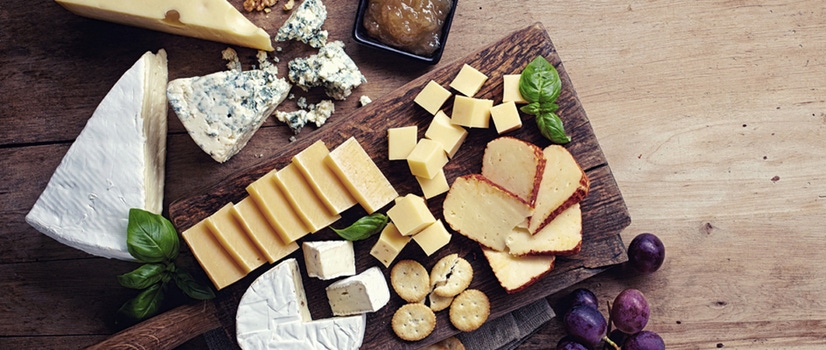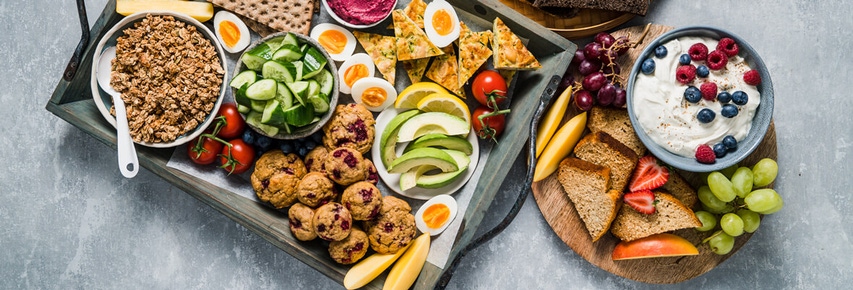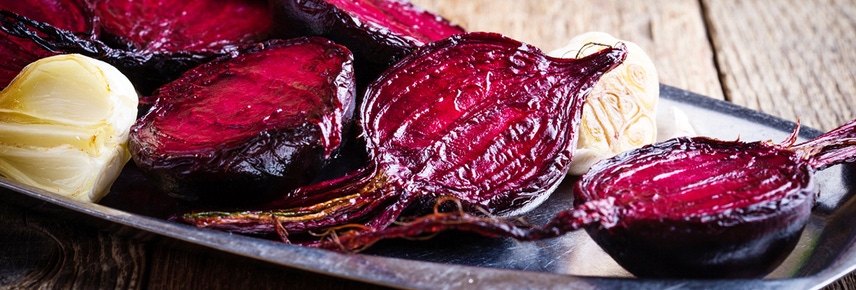
Food in focus: cheese
There’s a commonly held belief that “cheese is bad for you”, or, “cheese is fattening”, but is this really true? Perhaps the real problem is the fact that it’s just so hard to control how much you eat in one sitting.
Is cheese healthy?
Being a dairy product, cheeses are a good source of protein and calcium and also contains a range of vitamins and minerals including iodine, vitamin A, riboflavin, vitamin B12 and zinc. However, cheese is generally high in salt and saturated fat, which can increase cholesterol and kilojoule intake.
The saturated fat content of dairy foods, including cheese, often sparks debate about whether it is a healthy choice.
Looking closer at the research, a number of recent systematic reviews showed little evidence for concern regarding links between consuming dairy foods and chronic disease risk. In fact, it can actually have either a neutral or protective effect.
_1.png)
Evidence shows that consumption of milk, yoghurt and cheese, particularly low fat dairy, does not have a negative effect on heart health, with some studies even showing a beneficial effect. Low fat dairy may also reduce our risk of high blood pressure, type 2 diabetes and certain cancers (especially bowel and bladder cancer), while also contributing to stronger bones.
So, how is this possible given its high saturated fat content?
It seems the many nutrients within the dairy food matrix (including calcium, potassium, magnesium, riboflavin, vitamin B12, whey and casein) may help reduce the adverse health effects usually associated with saturated fat.
Does this mean you’ve got the green light to down that wheel of brie?
No, unfortunately it doesn’t. While dairy may not increase the risk of certain chronic diseases, there is evidence that shows eating less dairy or replacing it with unsaturated sources of fat may actually be more beneficial to our health.
_1.png)
What type of cheese is healthier?
Spreadable cheeses (such as ricotta and cottage cheese) are some of the lowest-fat cheeses, as is feta, mozzarella and bocconcini (hello pizza topping). Just be aware though that feta cheese is quite high in salt.
You can also often find low fat cheddar cheeses with 25 per cent, or even 50 per cent, less fat than their original counterparts. These will also be lower in kilojoules.
The creamy cheeses tend to have a much higher saturated fat and kilojoule content. French cheeses, like camembert and brie, and Italian taleggio are the ones to avoid if you’re worried about your waistline.
Since cheese and yoghurt are fermented they may be beneficial simply because they improve the growth of healthy gut microbes and gut function. So while the evidence on dairy overall is mixed, it seems that fermented dairy, including cheese, may be part of healthy diet.
So how much cheese can you eat (within acceptable limits)?
New Zealand Eating and Activity guidelines recommend at least two serves of low or reduced fat dairy or non-dairy alternatives a day. When it comes to cheese a serves equates to 40 grams (2 slices) of cheese. Choosing unflavoured milk, yoghurt, and cheese also helps limit the amount of added sugar in your diet.
_1.png)
Lactose intolerant but love cheese?
There’s good news for those who love cheese but are lactose intolerant. Hard and mature cheeses (like feta, camembert and brie) are lower in lactose, so can still be enjoyed in moderation by some people with lactose intolerance – check with your dietitian.
There’s also now an increasing range of dairy-free cheeses available if you need a dairy-free option or choose to follow a vegan diet.
So to cheese or not to cheese?
Since the overall evidence is mixed, it’s best to eat cheese (like most things) in moderation.
If you’re looking to build a healthier grazing platter for your guests by all means include some cheese, but also fill it with non-dairy foods that are much more protective against chronic diseases such as heart disease, diabetes, and cancer. These include wholegrains, fruits, vegetables and legumes, nuts and seeds. Check out our grazing platter guide here.

The latest nutrition advice, plus health and wellness tips delivered to your inbox monthly

